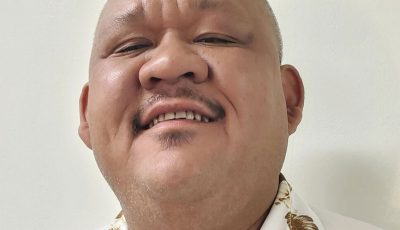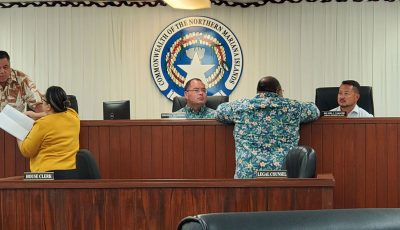The Senate and this election
There’s been a lot of smoke blown since Sen. Yumul resigned his seat, as constitutionally required, to run for lieutenant governor. Let’s cut to the chase. There are three Senate seats to be filled in the upcoming election on Nov. 4: two for full four-year terms and one to fill the remainder of Sen. Yumul’s term. So what is the best way to accomplish that task?
The CNMI Constitution provides the standard. Because more than half of Sen. Yumul’s term remains to be served, the vacancy must be filled by “special election.” We already have a regular “general election” constitutionally scheduled for Nov. 4. Everybody agrees that the special election should be held on the same day to save the Commonwealth money.
But after that, thanks to the “leadership” of Sen. Pete P. Reyes, it becomes political—profoundly, mysteriously, perplexingly, and distressingly political. Fast-tracked though the Senate and House in a week without a single dissenting vote, Senate Bill 18-66 “reacted” to a mythical hobgoblin – the danger that someone would seek to simultaneously run for two separate offices—and turned it into a straw man to be readily knocked down by a bill that, literally construed, does precisely nothing, at least so far as this year’s elections are concerned.
But Sen. Reyes (and, it would appear, a good number of supporters of the bill) have something quite different in mind than following the plain meaning of the text of the bill. They want to “reason” that filling a Senate vacancy in a special election held on the same day as a general election is a different “office” than that of senator to be filled for a full term in a general election. Why would they reach for such a strained interpretation of the text of the bill?
There is only one possible answer to that question: they seek to disqualify the already certified Senate candidates for the general election from eligibility for election to fill the remainder of Sen. Yumul’s term. Why would they want to do that? That is where it gets mysterious. And I am not talking about abstract notions of constitutional or statutory interpretation; I am referring to realistic, concrete, pragmatic motivations. As far as I can discern, there are only two possible answers to that question.
The first is that they support some stealth candidate for Sen. Yumul’s seat that they want to give a cakewalk to victory, and who remains in hiding to spring themselves on the public after the special election is declared. The second is even more disturbing. It is that they want to reduce the risk that a certain already-certified candidate (or possibly candidates) might be successful in winning a seat in the Senate. Either of these objectives is fundamentally anti-democratic, as they seek to limit voter choices and frustrate the will of the people.
Which brings us back to the initial question, “What is the best way to fill the vacancy created by Sen. Yumul’s resignation?” I have recommended that this seat be filled by the third-highest vote-getter in the general election. As part of that approach, I also recommended that no additional candidates be certified for the special election. The purpose of the second part of the recommendation is to reduce costs, simplify the process, and eliminate the potential for voter confusion.
As a matter of law, I believe the existing candidate certifications for Senate already qualify the seven certified candidates for the special election. If the special election is merged with the general election, utilizing the already certified candidates, there is no need for a separate ballot. This saves the cost of printing a separate ballot and the cost of tabulating a separate ballot.
Excluding the already certified Senate candidates from the special election unconstitutionally limits voter choices. Qualifying additional candidates for the special election will require the printing and tabulation of a separate ballot, which, as already noted, increases costs. It also tends to generate voter confusion by presenting voters with two ballots for the same office.
A final consideration is what might happen if there are two ballots and the candidates certified for the general election ballot are excluded from the special election ballot. In that event, it is entirely possible that the highest vote-getter on the special election ballot ends up with fewer votes than the third highest vote-getter on the general election ballot. That would precipitate a constitutional crisis, as seating the top vote-getter on the special election ballot would mean that the votes for the third-highest vote-getter on the general election ballot were effectively afforded less weight than the votes for the top vote-getter on the special election ballot, in violation of equal protection principles set out by the U.S. Supreme Court in Reynolds v. Sims.
Those are the considerations I carefully addressed in making my recommendation. At this point, I leave it to you, valued readers, to answer the question: “What is the best way to select someone to serve the balance of Sen. Yumul’s term?”
Stephen C. Woodruff
Independent candidate for Senate



























